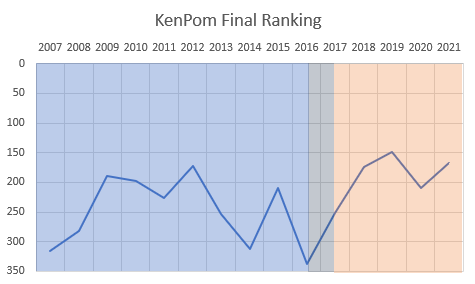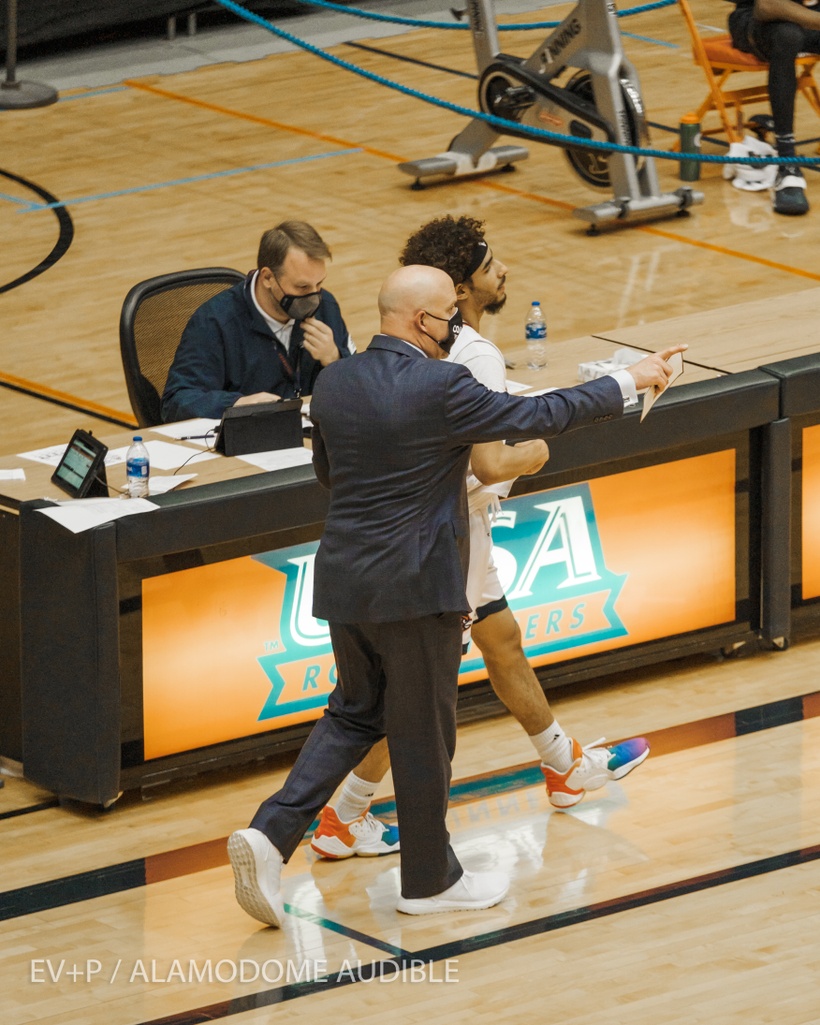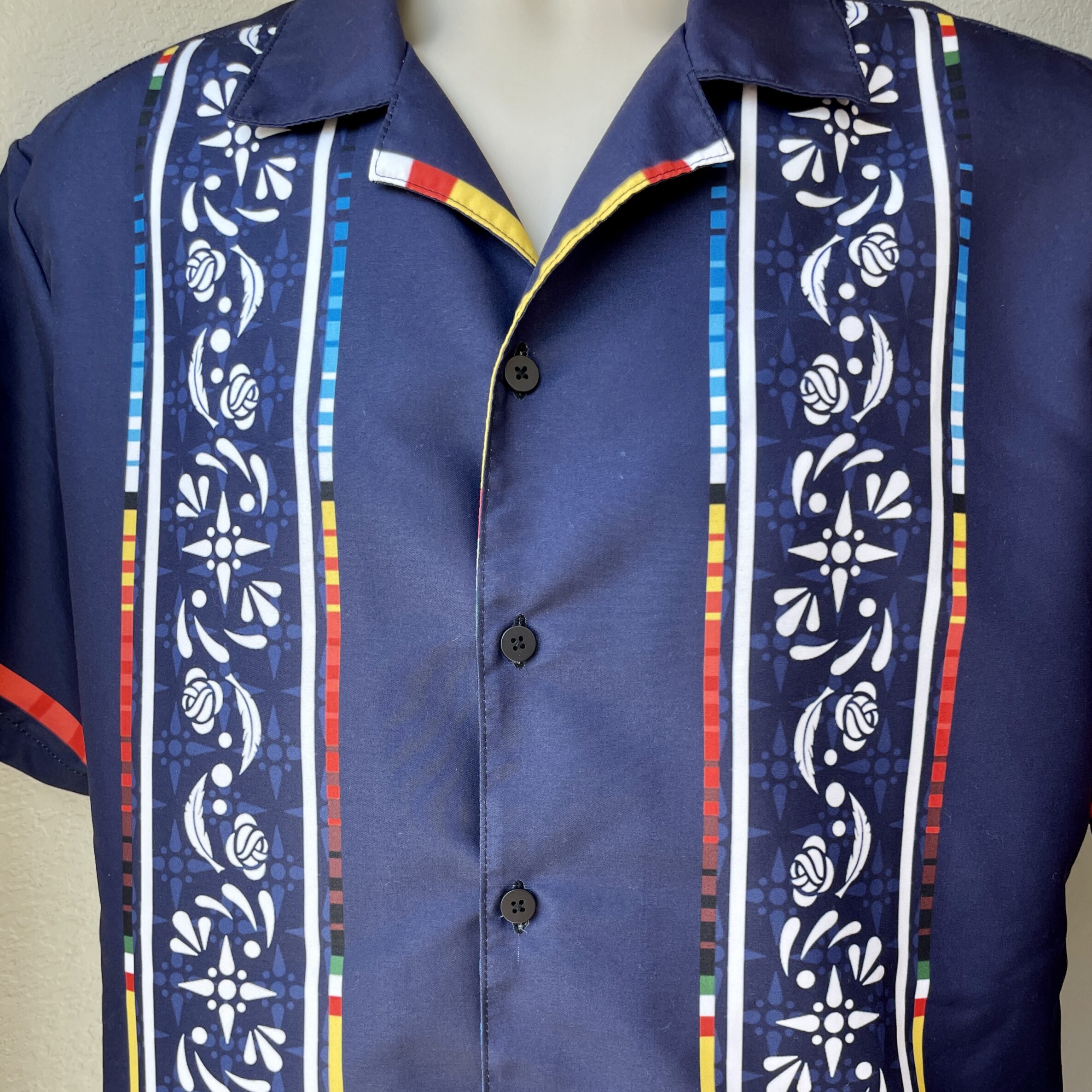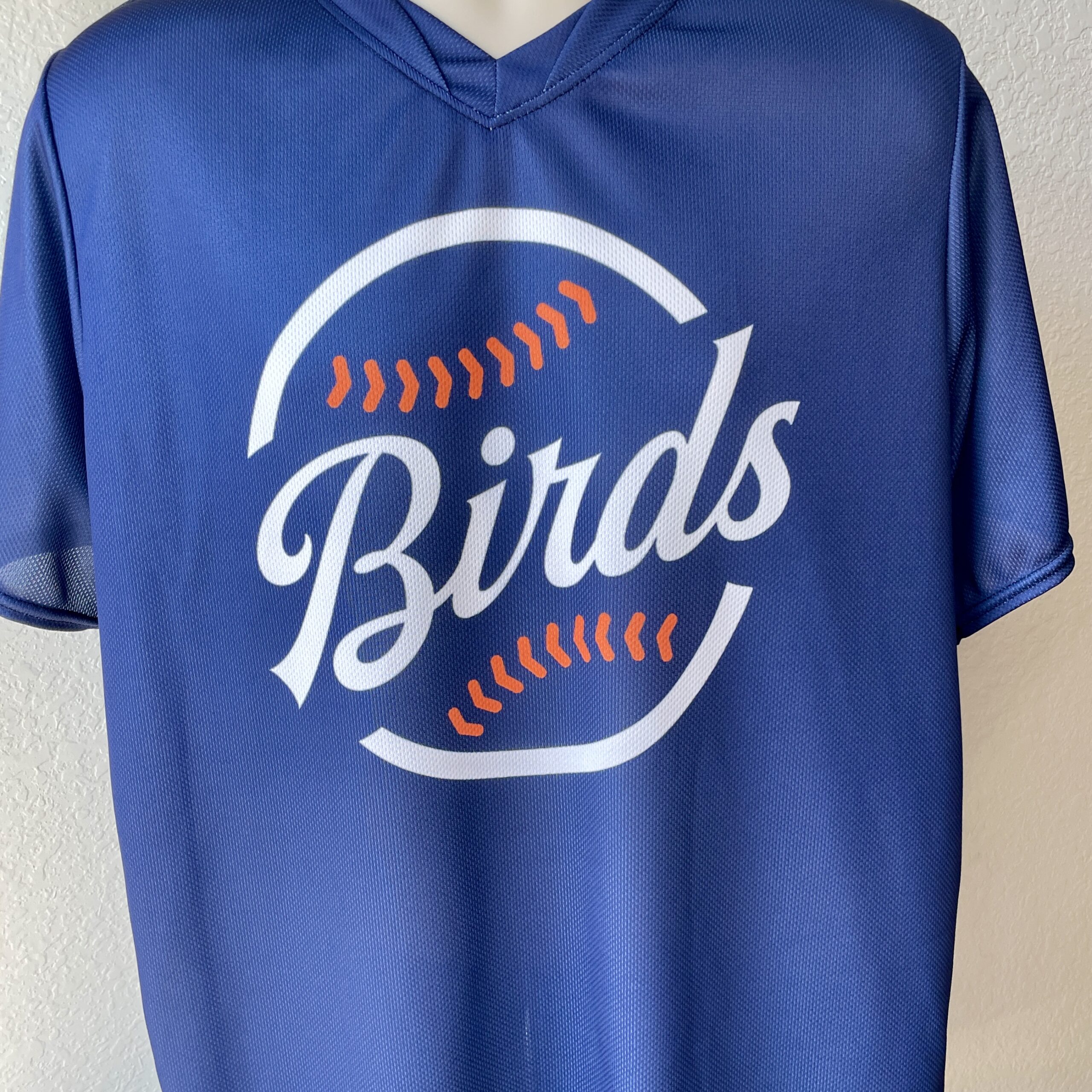Follow Alamo Audible:
Author: Jared Kalmus – @JaredUTSA
Inspired by this thread from @UTSARowdy, I spent today collecting my thoughts about the state of UTSA Men’s Basketball. What’s the overall trend of the program? How does Steve Henson’s tenure compare to Brooks Thompson’s? What does the future look like?
As Joel tweeted, UTSA basketball has come a long way since the last season of the Brooks Thompson era. The Roadrunners finished the 2016 season ranked 338th in Division I (there were 350 Division I teams in 2021). After that woeful season UTSA has drastically improved since Steve Henson took over the following season .

While Brooks Thompson’s program had a great run from 2008 to 2012, Steve Henson’s squads have almost all been better than Thompson’s best teams, including the Devin Gibson-led NCAA tournament squad in 2012.
Using the ever-trusty KenPom ranking system, UTSA has averaged as the 190th best team in America under Steve Henson, while Brooks Thompson’s teams averaged out at 250. That 60 team gap means that Steve Henson’s program has surpassed about 17% of Division I programs compared to where UTSA stood under Brooks Thompson’s guidance. While Thompson did deliver UTSA with a conference tournament championship and NCAA bid, the Roadrunners never finished better than tied for third in their division under Thompson.
UTSA’s ceiling and floor have both been raised under Henson. The Roadrunners’ worst season under Henson saw them finish the year ranked at 251, while Henson’s best season saw a 149 ranking. With Brooks’ best season being a 173 ranking, it’s fair to say that UTSA’s best season under Brooks Thompson is simply an average season for UTSA under Steve Henson.
That may seem ludicrous for those of us with fond memories of watching the Roadrunners win a game under the bright lights of the NCAA Tournament, however it’s easy to forget that same team also had losses to Evansville, Samford, Southeastern Louisiana, and Nicholls State before they pieced together their Cinderella run. BirdsUp.com is running a great recollection series on the 2011 season which confirms that the team was strikingly sub-par until march. I definitely recommend checking out part one of that series here.

While the data clearly shows that UTSA’s men’s basketball program has progressed under Steve Henson’s purview, the Roadrunners obviously have a lot of room to grow.
So far Henson’s success at UTSA has been pretty predicated by the emergence of Jhivvan Jackson and Keaton Wallace. With both expected not to return next season, UTSA definitely faces a new era in the program’s history.
The Roadrunners will be very hard-pressed to find true replacements for the two departing seniors, but the team’s depth should be improved thanks to Henson’s recent progress in recruiting. In the Brooks Thompson era it was rare for UTSA to land a recruit who held multiple mid-major offers or was ranked by the recruiting services. Thompson was forced to heavily target JUCO athletes due to his inability to bring top high school players into the program. That has changed under Henson as he’s been able to land notable prep athletes such as Jordan Ivy-Curry (offered by Appalachian State), Jacob Germany (four star recruit), and Josh Farmer (offered by Florida State).
If UTSA is to surpass the success of the Wallace/Jackson era in the short term it will likely come on the backs of Jordan Ivy-Curry and Jacob Germany.
Ivy-Curry took some time to adjust to the college level but as he became comfortable he became a very efficient scorer. While Ivy-Curry didn’t play as many minutes as a freshman as Keaton Wallace did, his per-minute production was pretty comparable to Wallace’s freshman year. Wallace scored 16.5 points per 40 minutes as a freshman while Ivy-Curry notched 14.5 points per 40 minutes (Jackson scored an absurd 24 points per 40 minutes as a freshman). Ivy-Curry may not be a Wallace replacement but he’s close.
Meanwhile, Jacob Germany really blossomed down the stretch for UTSA, with his improved touch around the basket being a big spark in the Roadrunners’ 10-3 finish down the stretch. As shown in 26-12 and 16-10 double-double performances against FAU and Charlotte, Germany has developed into more than just a dunker. If the four star athlete continues to emerge as a scoring threat then it will greatly reduce the sting of losing Jackson and Wallace. Developing strength to bang against the more physical centers in C-USA will allow Germany to take that step to the next level as one of the best bigs in the conference.
Germany and Ivy-Curry can do a lot, but they’ll never score at the explosive clip that Jackson and Wallace did. However, without two star scorers demanding sky-high usage rates, we should see the points-per-game numbers for the rest of the roster creep up a bit. Off-ball offense should also improve without Jackson and his on-ball shot creation demanding isolation space. Will it translate to enough distributed scoring to win games? We’ll have to wait and see.
With plenty of question marks heading into the 2021-2022 season it’s tough to predict UTSA being among the top teams in C-USA. However, the program’s youth has flashed enough to have some fair optimism for this team to be competitive despite the losses of Jackson and Wallace. It will be interesting to see if Steve Henson can keep growing the program or if his legacy will forever be anchored to that of his original dynamic duo.
Being better than Brooks Thompson is great, but that benchmark won’t do much for Henson as the years pass by. Fans expect consistent progress — Henson can’t let the Jackson/Wallace era be his peak.
Want to see more or less content like this? Let us know with an upvote or downvote.
Share this post:








Related Posts
UTSA Bounces Back from Friday Loss to Win Series against UAB
UTSA Baseball Run Rules Charlotte Twice, Leading to Series Win Ahead of Mid-Week Game Against #3 Texas A&M
UTSA Baseball Improves to 5-1 in AAC Play After Sweeping Tulane on the Road